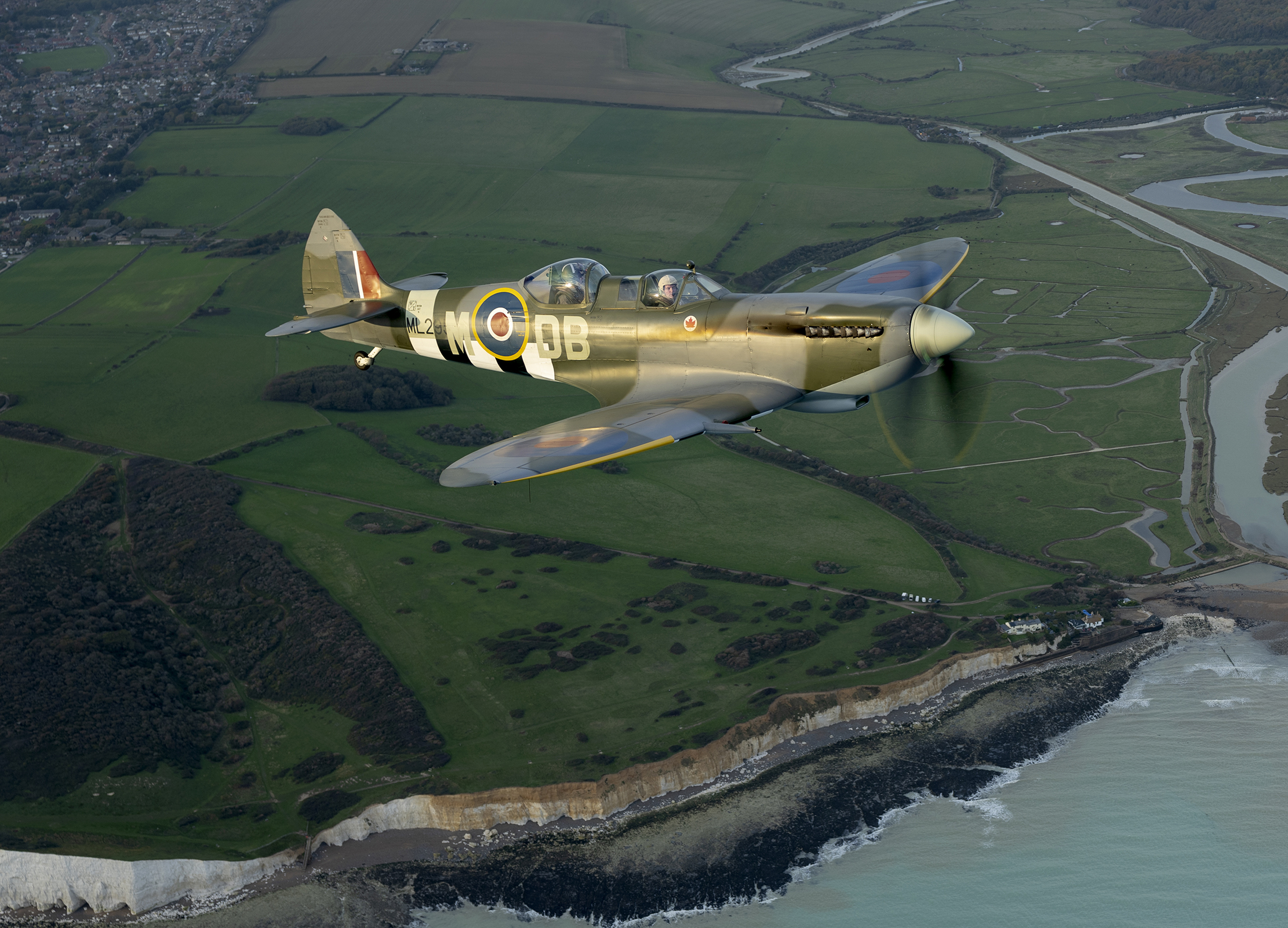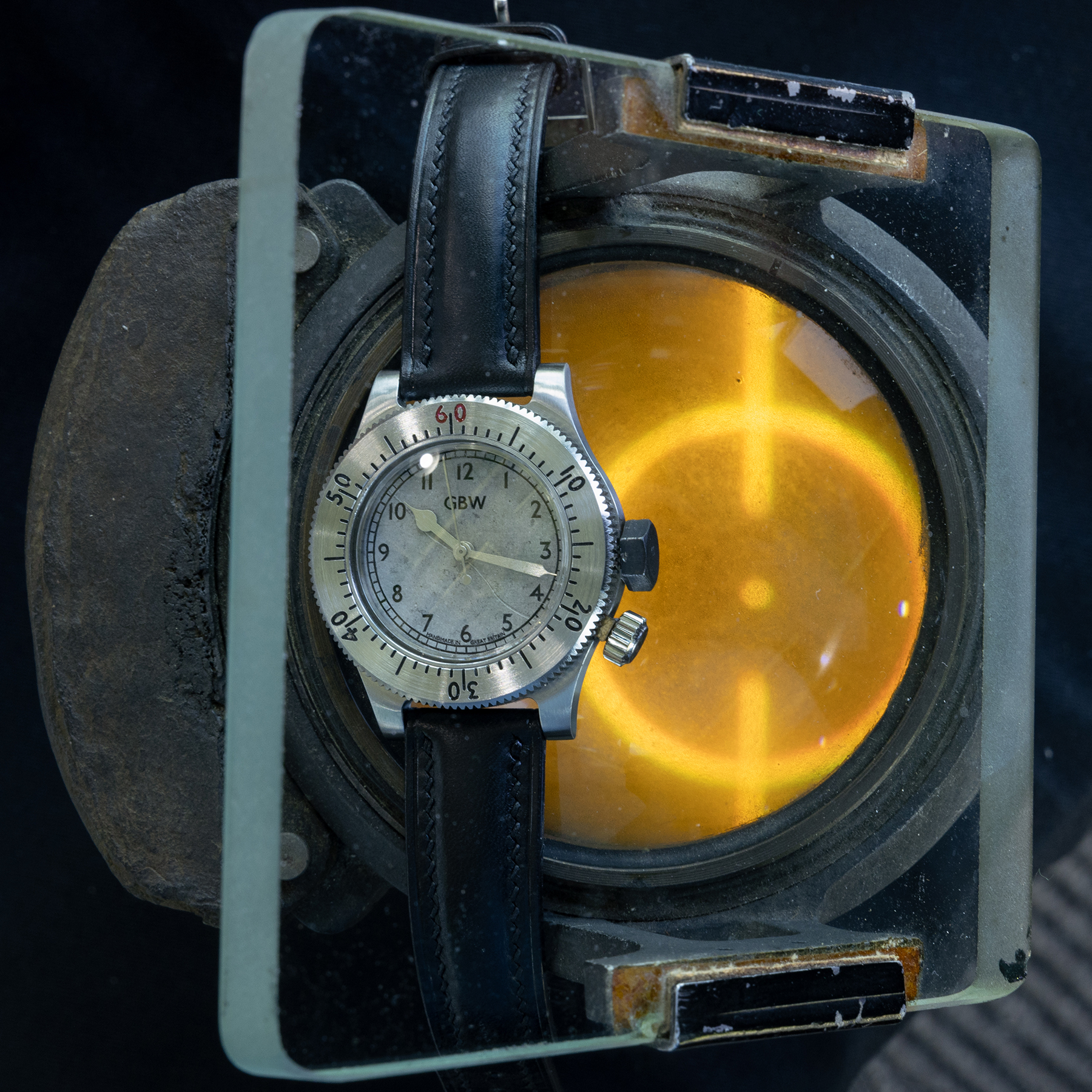The £20,000 watch made from the wing of a Spitfire shot down in the Second World War
The ultimate enthusiast's timepiece?


The D-Day anniversary celebrations of 2024 have been many and varied, but one of the more unusual has to be ‘The Few’ collection from The Great British Watch Company, made from the wreckage of Mk 9 Spitfire ML295, which was shot down over Normandy on July 30, 1944 — 80 years ago almost to the day. As far as we know, this is the first time any Spitfire has been reincarnated in wristwatch form.
Royal Canadian Air Force 411 ‘Grizzly Bears’ Squadron pilot Harold Kramer survived the crash — hidden by the French Resistance in the loft of a cottage for a month until the Allies liberated the area — but his aeroplane did not and the wreckage was used as target practice by the Germans. After the war, it was all but forgotten until the 1980s, when it was excavated and displayed in museums around Normandy.
In 2017, vintage-aircraft enthusiast Graham Oliver transported the ML295’s remains back to England and began a £3 million restoration; it finally flew again two years ago. ‘The tail-section was completely missing and many bits were unusable,’ he says, ‘but we managed to use some of the original airworthy parts, including the cockpit surround, inboard flaps, gear selector, some of the gauges and parts of the undercarriage.’
‘I was looking for an interesting project, so I was thrilled to be given some bits of the wing — one piece has a shell-hole in it,’ explains Colin Andrews, founder of The Great British Watch Company, which specialises in bespoke, handcrafted watches. ‘I’ve managed to find enough good parts to make the dials and hands for nearly 100 watches — it’s the first time parts from a Spitfire have been used as an integral part of a watch.’

Based on the Omega CK2129, the original watch Battle of Britain pilots wore into battle, ‘The Few’ is an edition of 60. Each watch costs £19,950 and comes in a box made from a type of wood specially created for Spitfire propellors called hydulignum (‘beech laminated in thin strips and impregnated with resin’), with a leather strap, handmade silver buckle, a silk ‘escape map’ (a replica of those issued to pilots) and handmade silver cufflinks, brooch and earrings, each containing a Spitfire fragment.
‘There’s a choice of movement with the watch, either British or Swiss-made, and everything is made not only in Britain, but local to my workshop (near Chester), with the case, which has been made from steel from a British mill, having travelled the furthest at 15 miles away,’ continues Mr Andrews. ‘I hope this proves the point that the talent, skill and equipment to make watches in Britain is not only still here, but it is also possible using local businesses and resources.’
The crown, hands and dial are constructed entirely from Spitfire parts — the latter from ‘the original skin of the Spitfire… [each with] its own unique patina and scars’ — and a portion of sales will go towards the aeroplane’s upkeep. ‘Harold Kramer and the names of the other 11 pilots who flew the Spitfire are engraved on the back of each one,’ adds Mr Andrews. ‘It’s taken me five years to make this collection and the first watches will be ready in the next couple of months.’ At the time of writing, 58 of 60 had already sold and, depending on demand, there may be a further edition making the total almost 100 — ‘after that, I’ll have run out of material’; visit www.great-british-watch.co.uk. Anyone wishing to fly in the restored Mk 9 Spitfire ML295, now based at Leeds East Airport (formerly RAF Church Fenton) near Tadcaster, North Yorkshire, should visit www.spitfires.com
Sign up for the Country Life Newsletter
Exquisite houses, the beauty of Nature, and how to get the most from your life, straight to your inbox.
Annunciata grew up in the wilds of Lancashire and now lives in Hampshire with a husband, two daughters and an awful pug called Parsley. She’s been floating round the Country Life office for more than a decade, her work winning the Property Magazine of the Year Award in 2022 (Property Press Awards). Before that, she had a two-year stint writing ‘all kinds of fiction’ for The Sunday Times Travel Magazine, worked in internal comms for Country Life’s publisher (which has had many names in recent years but was then called IPC Media), and spent another year researching for a historical biographer, whose then primary focus was Graham Greene and John Henry Newman and whose filing system was a collection of wardrobes and chests of drawers filled with torn scraps of paper. During this time, she regularly gave tours of 17th-century Milton Manor, Oxfordshire, which may or may not have been designed by Inigo Jones, and co-founded a literary, art and music festival, at which Johnny Flynn headlined. When not writing and editing for Country Life, Annunciata is also a director of TIN MAN ART, a contemporary art gallery founded in 2021 by her husband, James Elwes.
-
 'Monolithic, multi-layered and quite, quite magnificent. This was love at first bite': Tom Parker Bowles on his lifelong love affair with lasagne
'Monolithic, multi-layered and quite, quite magnificent. This was love at first bite': Tom Parker Bowles on his lifelong love affair with lasagneAn upwardly mobile spaghetti Bolognese, lasagne al forno, with oozing béchamel and layered meaty magnificence, is a bona fide comfort classic, declares Tom Parker Bowles.
By Tom Parker Bowles
-
 Country houses, cream teas and Baywatch: Country Life Quiz of the Day, April 24, 2025
Country houses, cream teas and Baywatch: Country Life Quiz of the Day, April 24, 2025Thursday's Quiz of the Day asks exactly how popular Baywatch became.
By Toby Keel